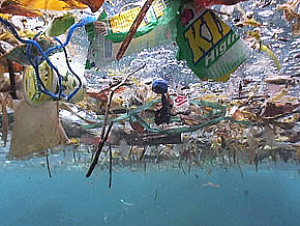 20 years later, yellow plastic rubber ducks are still appearing on our beaches having been part of a consignment of 28,000 of them lost at sea from a ship on its way from Hong Kong to the US. Since 1992 these yellow ducks have bobbed their way halfway around the world and have been washed up on shores in Hawaii, Alaska, South America and Australia; others have appeared frozen in Arctic ice and yet others have made their way as far as Scotland and Newfoundland.
20 years later, yellow plastic rubber ducks are still appearing on our beaches having been part of a consignment of 28,000 of them lost at sea from a ship on its way from Hong Kong to the US. Since 1992 these yellow ducks have bobbed their way halfway around the world and have been washed up on shores in Hawaii, Alaska, South America and Australia; others have appeared frozen in Arctic ice and yet others have made their way as far as Scotland and Newfoundland.
No one has definitively listed how many shipping containers are lost at sea annually but oceanographers estimate that between several hundred and 10,000 are lost each year. Donovan Hohn, author of a book on the story of the rubber-duckies entitled Moby-Duck argues that they are only a tiny part of a global garbage problem.
Among the most famous of the ducks are some 2,000 of them that are still circulating in the currents of what is termed the North Pacific Gyre – a vortex of currents stretching between Japan, southeast Alaska, Kodiak Island and the Aleutian Islands. This vortex of currents is today the home of what has become known as the Great Pacific Ocean Garbage Patch, a ‘garbage galaxy’ or island (some say the size of Texas) or junkyard made of floating debris, most of it plastic.
 Image source: www.5Wgraphics.com (click on image to enlarge)
Image source: www.5Wgraphics.com (click on image to enlarge)
A short documentary about the gyre called ‘Alphabet Soup’ follows a Canadian filmmaker as he travels to the north Pacific Ocean to see it for himself. Most of it consists of tiny plastic fragments and chemical sludge, but just about anything that people dump can be found there. And, now it is becoming a huge, complex problem.
https://video.google.com/videoplay?docid=3892310789953943147&hl=en
Plastic resists biodegrading; instead, a plastic shopping bag or pop bottle will photo-degrade over time, meaning that it will break down into smaller and smaller pieces but retain its original molecular composition. The result is a great amount of fine plastic sand that resembles food for very many creatures; the plastic cannot be digested, so sea birds or fish can eventually starve to death with a stomach full of plastic. Even if the amount of plastic is not enough to block the passage of food, the small pellets act as sponges for several toxins, concentrating chemicals such as DDT to 1 million times the normal level. This concentration then works its way up the food chain until a fish is served at our dinner table.
Cleaning up the Patch is likely to cost billions of dollars as the plastic and garbage reach more than 30 metres down into the ocean and a great number of organisms would be destroyed in the process. The long-term solution is to stop producing as much plastic products at home and change our consumption (and waste) habits.
Scientists from the Scripps Institution of Oceanography have now discovered that the quantity of small plastic fragments floating in the north-east Pacific Ocean has increased a hundred fold over the past 40 years.
The group’s report can be accessed here.
*****UPDATE********
New docu-feature TRASHED is set for release later this year where Jeremy Irons sets out to discover the extent and effects of the global waste problem, as he travels around the world to beautiful destinations tainted by pollution. Set to be a tour-de-force in waste mismanagement it could very well be 2012’s An Inconvenient Truth.
_____________________________
Explore more…
- FAQs De-mystifying the “The Great Pacific Garbage Patch” | Marine Debris Program by the NOAA (USA)
- TRASHED movie official website | 2012
